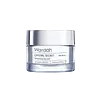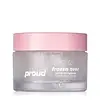What's inside
What's inside
 Key Ingredients
Key Ingredients

 Benefits
Benefits

 Concerns
Concerns

 Ingredients Side-by-side
Ingredients Side-by-side

Water
Skin ConditioningEthylhexyl Methoxycinnamate
UV AbsorberButylene Glycol
HumectantNiacinamide
SmoothingButyl Methoxydibenzoylmethane
UV AbsorberOctocrylene
UV AbsorberButyloctyl Salicylate
Skin ConditioningCyclopentasiloxane
EmollientPentylene Glycol
Skin ConditioningVinyldimethicone
Arachidyl Alcohol
EmollientAluminum Starch Octenylsuccinate
AbsorbentBisabolol
MaskingAlpha-Arbutin
AntioxidantActinidia Polygama Fruit Extract
Skin ConditioningLeontopodium Alpinum Extract
Skin ConditioningAmmonium Acryloyldimethyltaurate/Vp Copolymer
Behenyl Alcohol
EmollientArachidyl Glucoside
EmulsifyingParfum
MaskingSodium Hydroxide
BufferingGlycerin
HumectantCitric Acid
BufferingPotassium Sorbate
PreservativeSodium Benzoate
MaskingChlorphenesin
AntimicrobialPhenoxyethanol
PreservativeWater, Ethylhexyl Methoxycinnamate, Butylene Glycol, Niacinamide, Butyl Methoxydibenzoylmethane, Octocrylene, Butyloctyl Salicylate, Cyclopentasiloxane, Pentylene Glycol, Vinyldimethicone, Arachidyl Alcohol, Aluminum Starch Octenylsuccinate, Bisabolol, Alpha-Arbutin, Actinidia Polygama Fruit Extract, Leontopodium Alpinum Extract, Ammonium Acryloyldimethyltaurate/Vp Copolymer, Behenyl Alcohol, Arachidyl Glucoside, Parfum, Sodium Hydroxide, Glycerin, Citric Acid, Potassium Sorbate, Sodium Benzoate, Chlorphenesin, Phenoxyethanol
Water
Skin ConditioningPropanediol
SolventGlycerin
Humectant1,2-Hexanediol
Skin ConditioningButylene Glycol
HumectantSodium Polyacrylate Starch
AbsorbentAmmonium Acryloyldimethyltaurate/Vp Copolymer
Sodium Carbomer
Emulsion StabilisingCitrus Limon Fruit Extract
MaskingEthylhexylglycerin
Skin ConditioningMenthoxypropanediol
MaskingAloe Barbadensis Leaf Juice
Skin ConditioningNymphaea Alba Flower Extract
Skin ConditioningDisodium EDTA
Hyaluronic Acid
HumectantHydrolyzed Hyaluronic Acid
HumectantSodium Hyaluronate
HumectantAkebia Quinata Extract
Skin ConditioningPhenoxyethanol
PreservativeBetula Platyphylla Japonica Juice
Skin ConditioningChamaecyparis Obtusa Water
MaskingPhyllostachys Bambusoides Juice
Skin ConditioningCymbopogon Schoenanthus Extract
Skin ConditioningCitrus Aurantifolia Peel Extract
CleansingMentha Rotundifolia Leaf Extract
TonicAllantoin
Skin ConditioningBetula Alba Juice
AstringentInonotus Obliquus Extract
Skin ConditioningXylitol
HumectantTocopherol
AntioxidantWater, Propanediol, Glycerin, 1,2-Hexanediol, Butylene Glycol, Sodium Polyacrylate Starch, Ammonium Acryloyldimethyltaurate/Vp Copolymer, Sodium Carbomer, Citrus Limon Fruit Extract, Ethylhexylglycerin, Menthoxypropanediol, Aloe Barbadensis Leaf Juice, Nymphaea Alba Flower Extract, Disodium EDTA, Hyaluronic Acid, Hydrolyzed Hyaluronic Acid, Sodium Hyaluronate, Akebia Quinata Extract, Phenoxyethanol, Betula Platyphylla Japonica Juice, Chamaecyparis Obtusa Water, Phyllostachys Bambusoides Juice, Cymbopogon Schoenanthus Extract, Citrus Aurantifolia Peel Extract, Mentha Rotundifolia Leaf Extract, Allantoin, Betula Alba Juice, Inonotus Obliquus Extract, Xylitol, Tocopherol
Ingredients Explained
These ingredients are found in both products.
Ingredients higher up in an ingredient list are typically present in a larger amount.
Ammonium Acryloyldimethyltaurate/Vp Copolymer (let's call it AAVC for short) is a synthetically created polymer. It's used as a film-forming agent and used to thicken the consistency of products.
AAVC is able to increase the consistency and viscosity of products due to its large molecule size. It also prevents ingredients from separating.
Butylene Glycol (or BG) is used within cosmetic products for a few different reasons:
Overall, Butylene Glycol is a safe and well-rounded ingredient that works well with other ingredients.
Though this ingredient works well with most skin types, some people with sensitive skin may experience a reaction such as allergic rashes, closed comedones, or itchiness.
Learn more about Butylene GlycolGlycerin is already naturally found in your skin. It helps moisturize and protect your skin.
A study from 2016 found glycerin to be more effective as a humectant than AHAs and hyaluronic acid.
As a humectant, it helps the skin stay hydrated by pulling moisture to your skin. The low molecular weight of glycerin allows it to pull moisture into the deeper layers of your skin.
Hydrated skin improves your skin barrier; Your skin barrier helps protect against irritants and bacteria.
Glycerin has also been found to have antimicrobial and antiviral properties. Due to these properties, glycerin is often used in wound and burn treatments.
In cosmetics, glycerin is usually derived from plants such as soybean or palm. However, it can also be sourced from animals, such as tallow or animal fat.
This ingredient is organic, colorless, odorless, and non-toxic.
Glycerin is the name for this ingredient in American English. British English uses Glycerol/Glycerine.
Learn more about GlycerinPhenoxyethanol is a preservative that has germicide, antimicrobial, and aromatic properties. Studies show that phenoxyethanol can prevent microbial growth. By itself, it has a scent that is similar to that of a rose.
It's often used in formulations along with Caprylyl Glycol to preserve the shelf life of products.
Water. It's the most common cosmetic ingredient of all. You'll usually see it at the top of ingredient lists, meaning that it makes up the largest part of the product.
So why is it so popular? Water most often acts as a solvent - this means that it helps dissolve other ingredients into the formulation.
You'll also recognize water as that liquid we all need to stay alive. If you see this, drink a glass of water. Stay hydrated!
Learn more about Water